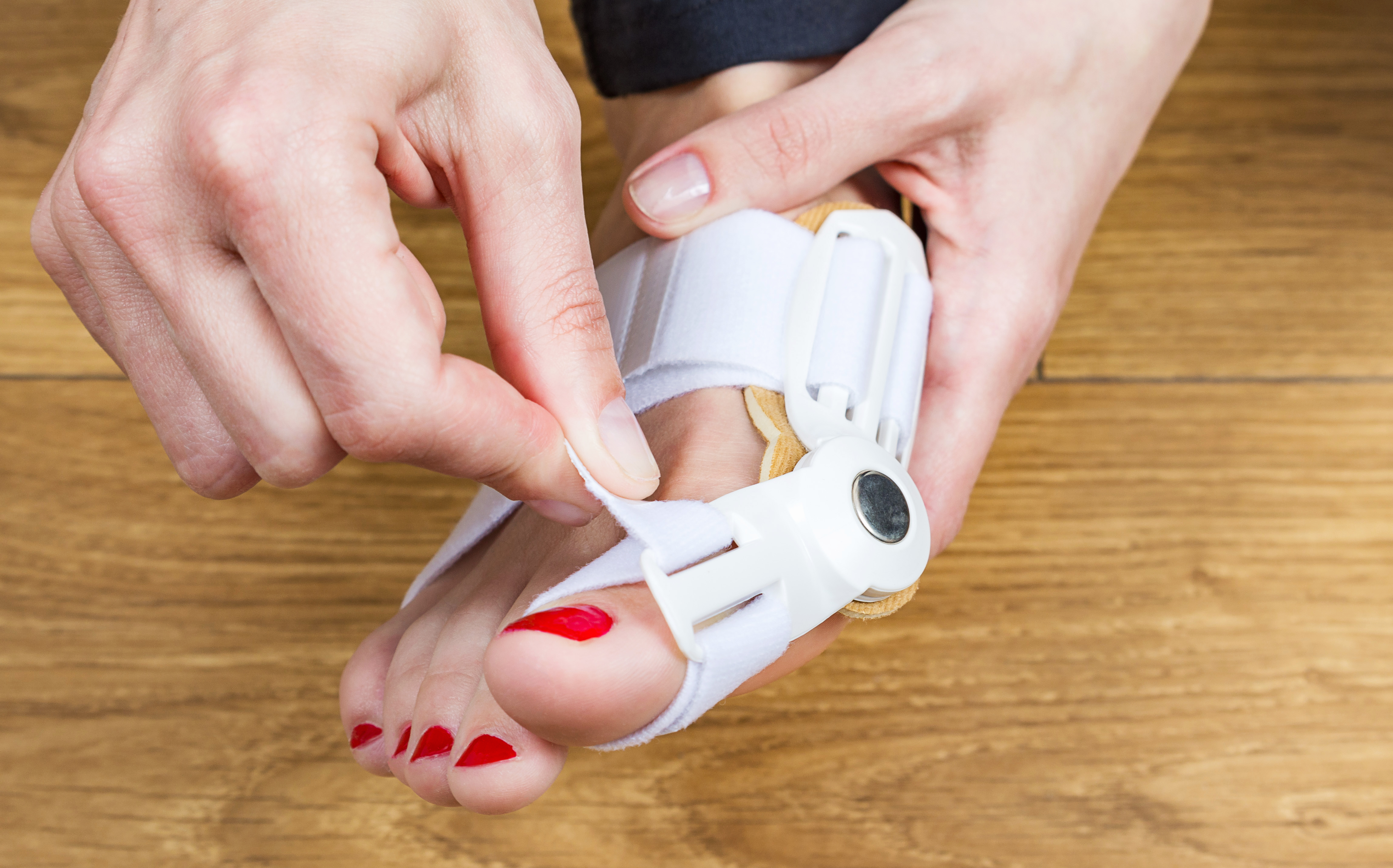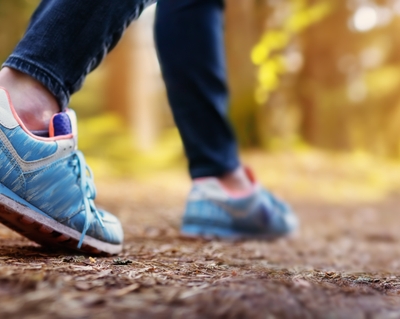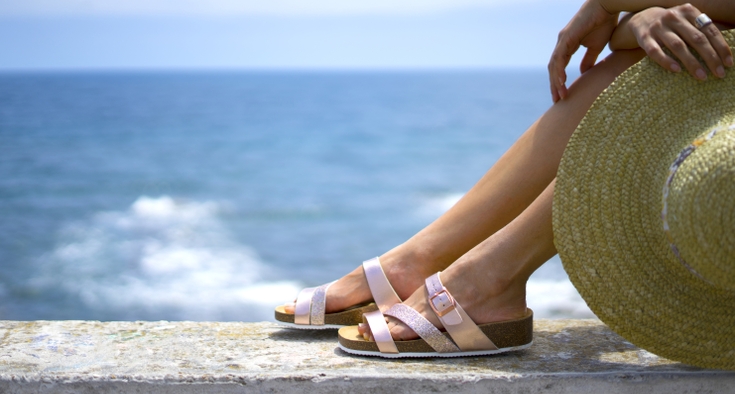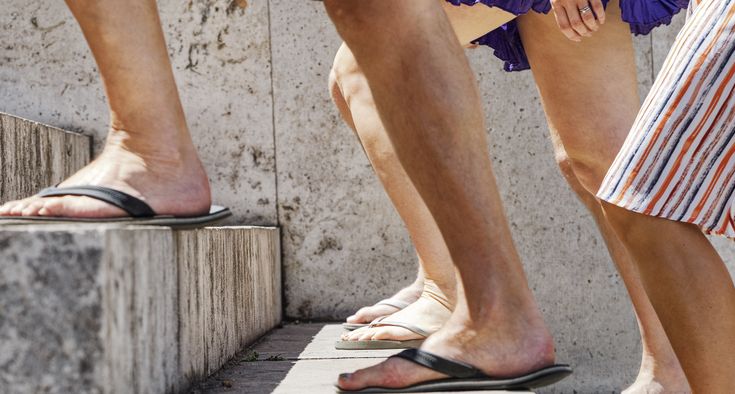If you have bunions, you likely experience foot pain.
You may have even tried one or more devices that claim to correct them.
In preparation for National Bunion Day (yes, it’s a real thing) on April 15, we asked Dr. Trent Boyer, a podiatrist with Novant Health Mothershed Foot and Ankle Specialists about bunions – the causes, treatments available and just what the deal is with the devices that claim to “cure” them.
Put your best feet forward with orthopedic care you deserve
What exactly are bunions? And how do you get them?
Bunions occur when the long bones in the front part of your foot shift out of their natural alignment and force the big toe to bend inward, toward your other toes. That creates a bony bump on the side of the foot.
Genetics play a big part. But footwear can, too. Going barefoot and wearing flat shoes that don’t have any support can cause the deformity to develop more quickly.
Can bunions develop at any age?
Yes. I’ve seen them on patients as young as 6. But we typically see middle-aged people with them. No decade is spared, though.
Are bunions dangerous?
You can live your whole life with bunions, though if they become too severe, they can cause contractures (a fixed tightening of muscle, tendons, ligaments or skin that prevents normal movement of the affected area) of the other toes. They may lead to decreased mobility, which is a risk factor for many other issues. Loss of mobility can increase your risk of obesity, heart disease, diabetes, blood clots, falls and injuries, isolation and even depression.
What types of corrective devices for bunions are on the market?
I’ve seen toe separators, spacers, padding and rubber bands that you connect to either side of the big toe. Some have toe alignment splints that can be worn at night – with varying degrees of success. If it’s a minor bunion and the joints aren’t too stiff and arthritic – and it's very early in the process – that might do some good.
But the best those devices can do is offer temporary relief; they’re not correcting the problem. There are some that look like instruments of torture. They might get the big toe straight while you’re wearing it, but it'll be painful then and probably painful after you take it off.
Are there any devices you recommend as a starting point for bunions?
For my older patients, who aren’t interested in surgery and have dealt with their bunions for a long time, I recommend silicone toe spacers and padding. They’re not going to straighten the deformity. But they can reduce discomfort. Soft and stretchy shoes are good options, too.
My grandma had bunions. She never had surgery, but she eventually started cutting holes on the sides of her shoes to allow for that knuckle bone to stick out.
I caution people not to believe the online ads that claim a product will “fix” your bunion. I’ve seen some that include a before and after photo. And in the “after” picture, you can actually see a healed incision, which indicates the patient had surgery. It wasn’t the product that corrected it; it was surgery.
Could any of the corrective devices for bunions do harm?
There’s one with a wheel you can crank to straighten the toe out. If you leave that on too long, or if you crank it too much, it could cause ligament or joint damage. There’s one with a strap that allows you to dial in how far you pull it over – and that could lead to injury.
These devices can definitely cause pain and irritation – maybe even more than what the bunions are already causing.
I have bunions and recently discovered socks that separate the big toe from the others. I know they’re not correcting anything. But my feet feel so good in them.
If the goal is just pain relief and this gets you there, then absolutely wear them.
The only caveat would be that, as the deformity gets worse, it may lead to other problems – foot pain, hammer toe (since the second and third toes are basically trying to get out of the way of the big toe). If you’re considering surgery, it’s better to jump in and get it fixed so we only have to fix one problem.
So, if you want to be bunion-free, surgery is the only option?
To correct it and return to a pain-free life, yes.My grandma’s bunions weren’t painful. I’ve had patients with a quarter of her deformity who can’t wear the shoes they want or do the activities they want, and they’re ready for surgery. It all depends on how limiting the issue is.
In our office, we keep things as minimally invasive as possible. But if surgery is necessary, we make appropriate recommendations to correct the deformity. We use a long-acting numbing agent that helps the foot stay numb longer, so our patients have minimal or no pain after surgery.
How long do you have to be off your feet after bunion surgery?
If we’re just correcting a regular bunion – what’s called a metatarsal osteotomy, or a bone cut – we actually don't make you stay off it. We put you in a flat surgical shoe for six weeks. For more severe deformities, immobilization of the foot and ankle may be needed for six weeks after surgery.Are there any questions patients should ask a podiatrist during a consultation for bunion surgery?
Ask about all treatment options and recovery time. And if any doctor guarantees they’re going to fix your bunion, be hesitant. No doctor can guarantee a specific outcome. Every surgery has risks and benefits. Not all bunions are created equal; some are more complicated than others.
‘Life is better without bunions’
When none of the devices she tried offered relief, Christian Barnes opted for surgery.
Christian Barnes, a nurse by training and clinic administrator for Novant Health Mothershed Foot & Ankle - Winston-Salem, lived most of her life with bunions. They cramped the lifestyle of the on-the-go, working mom.

“I love hiking, yoga, tennis, volleyball, kayaking – anything outdoors with my family,” said the High Point resident. “But foot pain was making that impossible. I’d push through the best I could, not wanting to miss out or let my family down.”
The three Barnes kids inherited their mom’s athleticism. Her two sons play soccer and run cross country. Her daughter does competitive dance. They inherited her bunions, too. They’re congenital; Barnes’ dad and her two brothers also have them.
Working 12-hour shifts as a nurse for 10 years made it even tougher, said Barnes, 40. “I couldn’t walk more than an hour or two without pain,” she said. “I’d reach the point that I was limping.” She unknowingly made her condition worse by wearing improper footwear, including high heels.
She tried nearly everything to reduce the pain they caused, including “some crazy little devices. There was one that cranks and pulls the big toe back. The more you crank, the more it hurts.”
It wasn’t until she started working at a podiatry office that she learned about a procedure that could rid her of them permanently. Better still, it didn’t involve a hospital stay; it’s outpatient surgery. “You wait until it gets bad enough, right?”
Relief, at last

She scheduled surgery during Christmas break to minimize her time away from work. In December 2023, Mothershed Foot and Ankle Specialists’ Dr. Robert Goecker, a former podiatrist for Sarasota Ballet, removed bunions on both of Barnes’ feet in one operation. That’s not typically recommended.
It worked for Barnes because she has support at home – a must for the first couple of days post-op – and she has a desk job that allowed her to keep her feet propped up at work.
Barnes experienced some soreness during the first couple of days after surgery, but Tylenol took care of it. She returned to work a week later.
Swelling should be expected for several weeks up to a few months post-op, and that was true for Barnes. The first pair of shoes she bought after surgery were wide enough to accommodate the swelling. But her shoe size has since decreased; she’d been wearing 8.5 wide. Today, she wears an 8 regular since she doesn’t have to buy oversized shoes anymore. And, she’s happy to report that she only buys “cute shoes” now.
Her advice to people living with painful bunions? Hint: It won’t be surprising since she works in a podiatry office.
“See a podiatrist. Even if the time isn’t right for surgery, they can recommend comfort measures and offer tips on slowing the progression. Our doctors have a whole list of shoe recommendations for comfort.
“This surgery completely restored my mobility and allowed me to return to full activity level,” she said. “Life is so much better without bunions. My feet aren’t holding me back anymore.”










